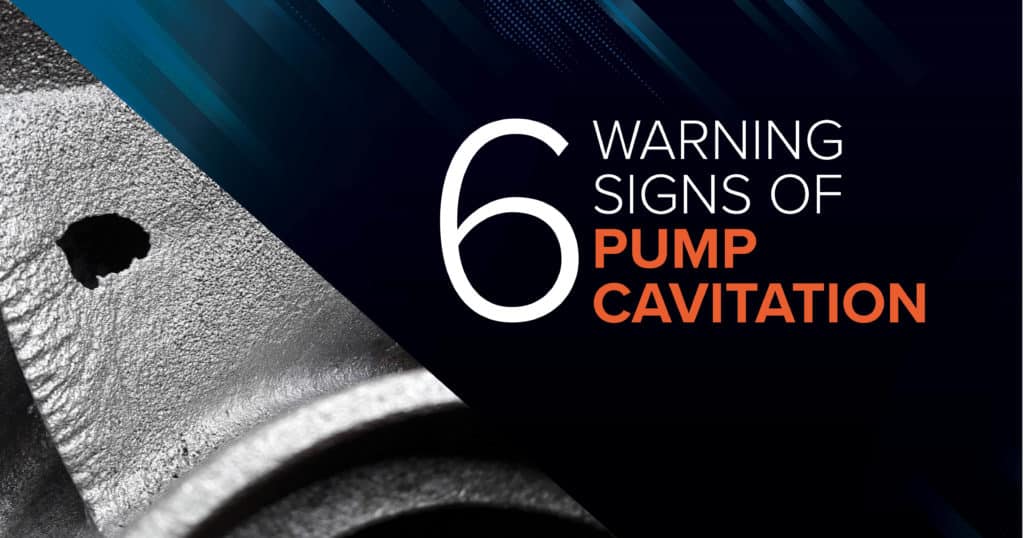“Cavitation” occurs when pressures and temperatures fluctuate within pump systems, causing bubbles to form in the fluid–unable to escape. Cavitation can be remarkably problematic for pump operators, which is why it is necessary to recognize the warning signs and take preventative measures.
What is Pump Cavitation?
As the pressure continues to fluctuate, the bubbles ultimately collapse. This results are significant hydraulic impacts from the imploding bubbles, which can cause areas of fatigue on the metal impeller surfaces. Ultimately, it may lead to a severe decrease in pump performance in severe cases of cavitation.
There are multiple types of cavitation that can occur in pump systems:
- Suction Recirculation Cavitation—Turbulence within the process fluid releases entrained gases into the suction piping.
- Vaporization—Loss of suction head or increase in suction temperature leads to liquid vaporization through cavitation.
- Vane Passing Syndrome—Usually caused by an impeller that is too small.
- Air Ingestion—The allowance of air and bubbles in the suction end of the pump.
Warning Signs of Cavitation
Several key warning signs that can tell you when cavitation is possibly occurring within your pump system. Here are some symptoms and causes to look for:
- Increases in Suction Tank Levels
Inconsistencies in the suction tank levels can be a sign of cavitation. It can decrease the differential head across the pump or cause vortex issues that allow air into the pump’s suction end. - Temperature Changes
Sometimes, internal or external factors within the piping system can raise the temperature of the liquid. If it gets close to its vapor point, cavitation can occur. - Pressure Changes
Vapor pressure of the fluid can get close to atmospheric pressure, causing the pump to cavitate with certain some climate changes. A valve packed in the suction piping can also result in negative pressure changes that often cause cavitation. - Loud Noises
The operator can often hear the implosions of the vapor pockets caused by cavitation. It may sound like a rumbling or cracking noise— similar to the noise of rocks passing through the pump. - Reduced Suction Head
The suction head may be noticeably low. It is common for the suction lift to be too high, which increases pipe friction and causes cavitation. - Impeller Wear
As cavitation occurs, it can damage the metal surfaces of the impeller and lead to decreased performance or other internal damage within the pump system. Extreme impeller wear is a common sign of cavitation.
How to Prevent Cavitation
Cavitation can damage the internal pump components and cost you downtime for added maintenance and repairs. Properly installing and maintaining your equipment is the best prevention against cavitation. Cavitation occurs because of external factors that can usually be solved with correct setup, operating, and monitoring to dial in the pump system. Ideally, you can minimize the drastic changes in pressures and temperatures that can cause cavitation. Having the right pump for the application is also crucial.
When it comes to pump selection, configuration, installation, maintenance, training, and repair, DXP Pacific has you covered. We can help you get the most out of your pump system and avoid costly problems like cavitation. Or, if it does occur, we can help troubleshoot the problems, make the necessary repairs and make adjustments to avoid cavitation in the future. Contact us today to learn more.

